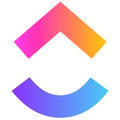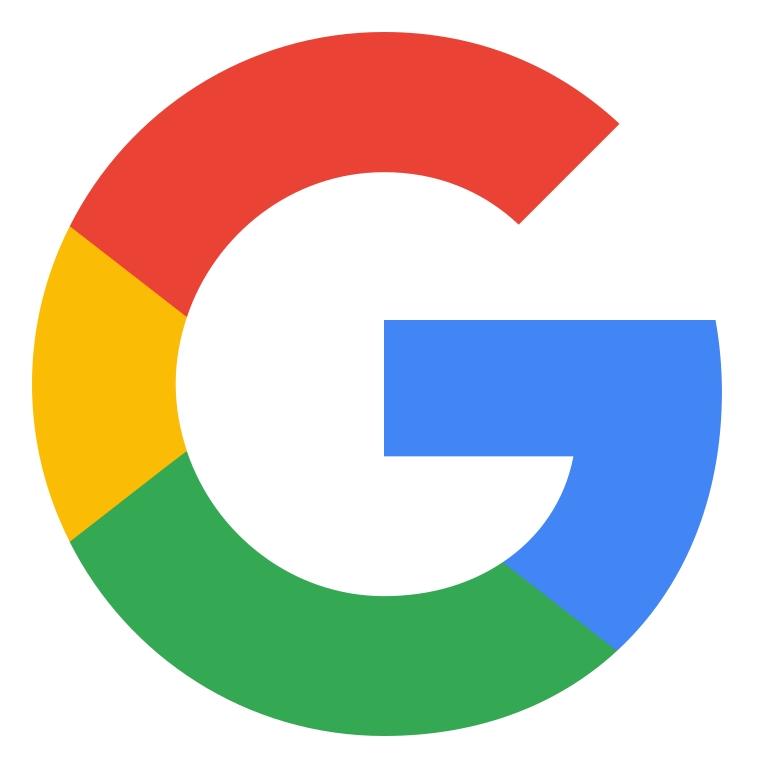The Ultimate List of Landing Page Statistics for 2025


Landing pages are some of the most valuable assets any business can have.
These unique pages are custom-built to convert customers by delivering personalized, highly relevant offers that your clients can’t refuse. Unlike other pages on your site, your landing pages are specific to a single marketing campaign and specific segment of your audience.
Used correctly, a landing page can boost your chances of conversions, increase profits, and even add new leads to your email list for nurturing purposes.
Of course, just as consumer preferences and websites evolve, the features and components of an effective landing page can change too.
The statistics in this guide will help you better understand and leverage your landing pages.
What are Landing Pages?
Landing pages are often building using dedicated landing page builders and act as standalone parts of your website dedicated to converting customers in a specific marketing or lead nurturing campaign. These pages won’t feature the same navigation elements and components as the other pages on your site. Instead, they serve a single purpose: to convert.
People can arrive on your landing pages when they click a link in your social media campaigns, PPC ads, or email marketing messages. The singular focus of landing pages makes them an excellent tool for generating specific actions from customers.
Before we get into some specific landing page statistics, let’s look at some of the highlights:
Landing Page Stats – Editor’s choices
- Competing offers on a landing page can reduce the conversion rates by 1.5%
- Landing pages with social proof in the copy convert at an average of 12.5%
- Companies see a 55% increase in leads when upgrading their landing pages from 10 to 15.
- Using CRO (conversion Rate Optimization) tools can increase ROI by 223%.
- 52% of B2B PPC ads point to a home page instead of a landing page
- Click-through landing pages perform best for most industries, however around 62.6% of landing pages use forms.
Most Important Landing Page Statistics for 2024:
1. Across all industries, the average rate for landing page conversions is 9.7%
WordStream
WordStream finds that on average, landing pages across all industries can achieve an average conversion rate of almost 10%. During research into thousands of Google Ads, WordStream found that conversion rates can vary from 3% to 11.45% and higher depending on your industry and the features of your landing page.
Something as simple as changing button color, font spacing, and images on your landing page as part of a standard A/B test will also increase your chances of higher conversions.
2. Landing pages only account for 5.1% of sign-up forms
Omnisend
Omnisend notes that landing pages only account for around 5.1% of all enabled sign-up forms. However, landing pages are also the forms most likely to earn conversions.

Omnisend’s research discovered that popups were the most popular signup form among their customers, but they only achieved a 3% conversion rate on average. However, while landing pages were the least popular sign-up form option, they could achieve a conversion rate of up to 23%.
Crucially, the best landing page sign-up forms will only include 3 questions.
3. Landing page conversions drop when companies ask personal questions
Omnisend
Omnisend’s research went on to find that among customers using landing forms, the highest conversion rates occurred when fewer personal questions were asked. Clients hate answering questions about things like gender or giving their full name.
Most sign-up form landing pages ask for an email and first name. Conversion rates dropped from 10.15% to around 5-6% when forms asked for birth dates and genders.

Make sure you’re only asking for the information you need.
4. Addressing buyer concerns on landing pages increases conversions by up to 80%
Gripped.
According to keynote speaker Marcus Sheridan at the Inbound 2019 Marketing event, the most valuable thing a company can do on a landing page is address common concerns customers might have. For instance, promising your clients that you won’t send spam to their email, or use their personal data will improve your chances of success.
Promising customers that they had nothing to worry about allowed Marcus to improve his conversion rates by around 80%.
5. Having 10-12 landing pages increases leads by 55%
Hubspot
Hubspot’s landing page research found that more landing pages is often better for creating leads and conversions. The more optimized pages a business had, the more likely they were to find more customers.

Having more landing pages allows you to segment your traffic sources and create specific pages for different kinds of customers. Creating between 10 and 12 landing pages can improve your leads by around 55%. Companies with more than 40 landing pages can take their lead opportunities even further.
6. 30% of landing pages have too much copy
Unbounce.
According to Unbounce, a lot of landing pages could be scaring clients away with too much copy. 30% of companies fill their pages with too much text. Customers like sales strategies that get straight to the point.

The Unbounce report found that business sector landing pages containing less than 100 words converted up to 50% better than those with more than 500 words. Different industries respond in unique ways to a higher number of words, but in general, short and sweet is best.
7. Pages with 1 CTA have 1.6% more conversion power
Unbounce
The study from Unbounce also found that customers don’t like to be confused by too many offers. Landing pages that focus a visitor’s attention on a single CTA are more likely to convert. The average conversion rate for a page with just 1 link was 13.50%.
When landing pages included 2-4 links, conversion rates dropped to 11.90%, while pages with more than 5 links had an average conversion rate of 10.50%.

8. Users are 80% more likely to read content combined with pictures
Venngage
Studies from Venngage found customers are more likely to convert when viewing a landing page that combines both text and images. While images alone won’t generate too many click-throughs, using visuals with your content can add context and depth to your landing page.
Visual content is becoming increasingly popular across the web today. Even something simple like a graph or chart could take your conversions to the next level.
9. Landing pages with a loading time of 2 seconds or less convert best
Portent
A Portent study found that the faster your website landing pages load, the better they’ll convert. This is easy to understand when you consider that most people judge the credibility of a business based on how quickly the site loads.
The Portent research revealed that pages with a load time of less than 2 seconds converted significantly better than their slower counterparts.
10. Personalized CTAs convert up to 202% better
Hubspot
Hubspot research reveals that personalizing a landing page CTA to suit your target audience can significantly improve your conversion rates. A “smart” CTA that changes dynamically to suit the customer based on the cookies on their browser achieves the highest conversion results.

Adding a personal touch to a CTA button, or addressing a specific problem for each segment of your audience in targeted landing pages will boost your chances of gaining more sign-ups or sales.
11. 65% of the top landing pages use business names in the title tag
Nifty Marketing
According to Nifty Marketing, while the trust customers have for online companies is increasing, people are still uncertain about the offers they find online. Clients value transparency, and using a recognizable brand name in your title tag can help to make your site seem more credible.
65% of the top-converting landing pages in the Nifty Marketing study used their business name in their title tag to reassure audiences they were dealing with the right company. Using a logo on your landing page can help with this too.
12. Two-step landing pages can be up to 30% more effective
Databox
According to Outback Team Building and Databox, a two-step landing page form can be up to 30% more effective than the traditional one-step alternative.
Although you might assume that multiple pages will just make the landing page experience less efficient, experts say that spreading the form fields and questions you ask your users out can help. Using a two-step form will reduce the number of answers customers have to give on each page. This allows you to gather more information without complicating things for users.
13. Including contact details on your landing page increases sign-up by 9%
Neil Patel
Neil Patel notes that adding business contact details, like a phone number or address to your landing page, can improve conversions. Access to business information gives your customers peace of mind by showing you’re an established company.
The brand that tested this method on their landing page saw a 54% sign-up rate on a page with a business phone number, compared to an only 46% conversion rate on a landing page without contact details.

14. Adding video to a landing page can improve conversions by 86%
Smart Insights
The Smart Insights team highlighted the value of visual content on landing pages in their study. According to the team, adding video content to a landing page is a great way to avoid overwhelming customers with excessive text.
Companies using video to introduce important information about a product, service or offer, achieved conversion rate increases of up to 86%.
15. The best landing pages use social proof
Nifty Marketing
When assessing trending features among the top-converting landing pages on the web, Nifty Marketing found that many used social proof. Around 36% of the top landing pages had testimonials, and another 11% had reviews.

If you’re already soliciting testimonials and reviews from customers, repurposing them to make your landing pages more appealing can significantly increase trust and credibility. 60% of customers think that reviews are the most authentic content a company can use.
16. Form layout has a huge impact on conversions according to 46% of marketers
Marketing Experiments
The team at Marketing Experiments believes that the layout of your forms can have a huge impact on your chances of conversions. The more complicated a form looks, the more likely your customers will be to abandon ship.
46% of marketers say that form layout will influence whether your customers choose to click on your landing pages.
17. Green is the top choice for landing page button color
Chartmogul
The colors on your landing page can be just as important to your conversions as your form layout. Chartmogul found that the most popular color for a landing page CTA button is green. 51.3% of landing pages have a green CTA.
The second most popular color is blue at 20.5%, followed by red at 10.3%.

18. 86% of the top landing pages are mobile-friendly
Nifty Marketing
Nifty Marketing’s review of high-converting landing pages discovered that 86% were mobile friendly. All landing pages should be mobile-friendly today, as a higher number of customers are beginning to browse from their smartphones and mobile devices.
Companies like Crevio or LinkTree even design landing pages of their users in mobile-first way, recognizing that majority of their customers’ traffic comes from social media platforms often browsed on mobile devices.
19. 82.2% of landing pages need optimization
Unbounce
Unbounce found that slow pages can be seriously problematic to a company’s landing page conversion rates. While there are many aspects that can cause slow pages, around 82.2% of the landing pages evaluated in this study had at least one image that needed compression.
Companies with 1mb+ oversized images only earned an average conversion rate of 9.80%, compared to 11.40% for pages with compressed images.

20. The highest amount of traffic to landing pages comes from email
Unbounce
Unbounce also found that email marketing is still the solution driving the most attention to landing pages. Around 13% of the traffic coming to landing pages appears to come from email, followed by 11.8% from direct advertising, 11.4% from social media, and 11.2% from organic traffic.
The marketing strategy generating the least amount of traffic was paid advertising at 10.7%.
21. Good testing and targeting increases conversions by 300%
Steel House
Steel House studies indicate that testing and optimization are essential to making the most of any landing page. Being able to analyze your pages and adjust the components that aren’t driving conversions is crucial.
Steel House found that analyzing pages and optimizing them properly can improve conversion rates by around 300%.
22. Only around 17% of marketers are using A/B testing
Hubspot
Despite evidence that optimization and evaluation is crucial for improving landing page ROI, Hubspot research reveals that very few marketer’s A/B test their landing pages. Only around 17% of companies use A/B testing on this part of their marketing strategy, according to Hubspot.
Testing things like button color, copy, targeting, and offers can all improve conversion rates.
23. Using optimization software increases conversions by up to 30%
Unbounce
Unbounce believes that using AI-powered optimization tools can significantly improve your conversion rates. Pages using smart traffic analytics and optimization tools can increase conversions by around 30%.
There are many different tools that can help with optimizing landing pages today, though most will focus on A/B testing your campaign elements.
24. 48% of the best landing pages rank for Google Maps and Organic Search
Nifty Marketing
Over six years of research, Nifty Marketing found that the top-performing landing pages are almost always optimized for search engines and the local search grid. 48% of the leading landing pages ranked in Google Maps and organic search query results.
Adding keywords and optimization elements to your landing pages can help them to gain more visibility and improve your chances of leads.
25. 55% of landing page submissions on Hubspot came from eBooks
HubSpot
Research from Hubspot indicates that the best lead magnet for your landing pages might be a downloadable eBook. If you have long-form content to share, then adding an eBook to your landing page could convince your customers to convert more often.
More than half of the landing page submissions on the HubSpot blog were achieved by offering customers a free eBook.
Gain More Conversions with Your Landing Pages
Landing pages are a crucial part of any marketing strategy, and something your business can’t afford to overlook in today’s digital age. Around 49% of marketers say that increasing their customer acquisition strategy is their number one objective right now. Landing pages are just one of the many ways you can attract more customers to your businesses and connect with clients for long-term sales nurturing strategies.
Hopefully, the statistics above have given you an insight into the factors that make landing pages more successful, and the mistakes you’ll need to avoid increasing your chances of success. Now it’s time to go and create some stats with your own with your own landing page tests.
Want to Learn More?
- Best Landing Page Builders
- Leadpages Review: Pricing, Pros and Cons
- The Ultimate List of Email Marketing Statistics
Sources
WordStream
OmniSend
Gripped
HubSpot
Unbounce
Venngage
Portent
Nifty Marketing
Databox
Neil Patel
Smart Insights
Marketing Experiments
Chartmogul
Steel House
Related Products








